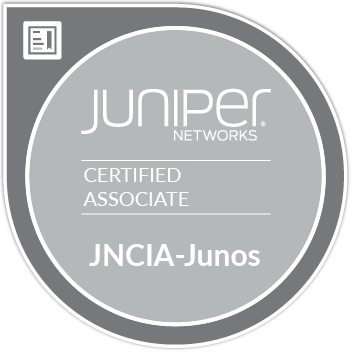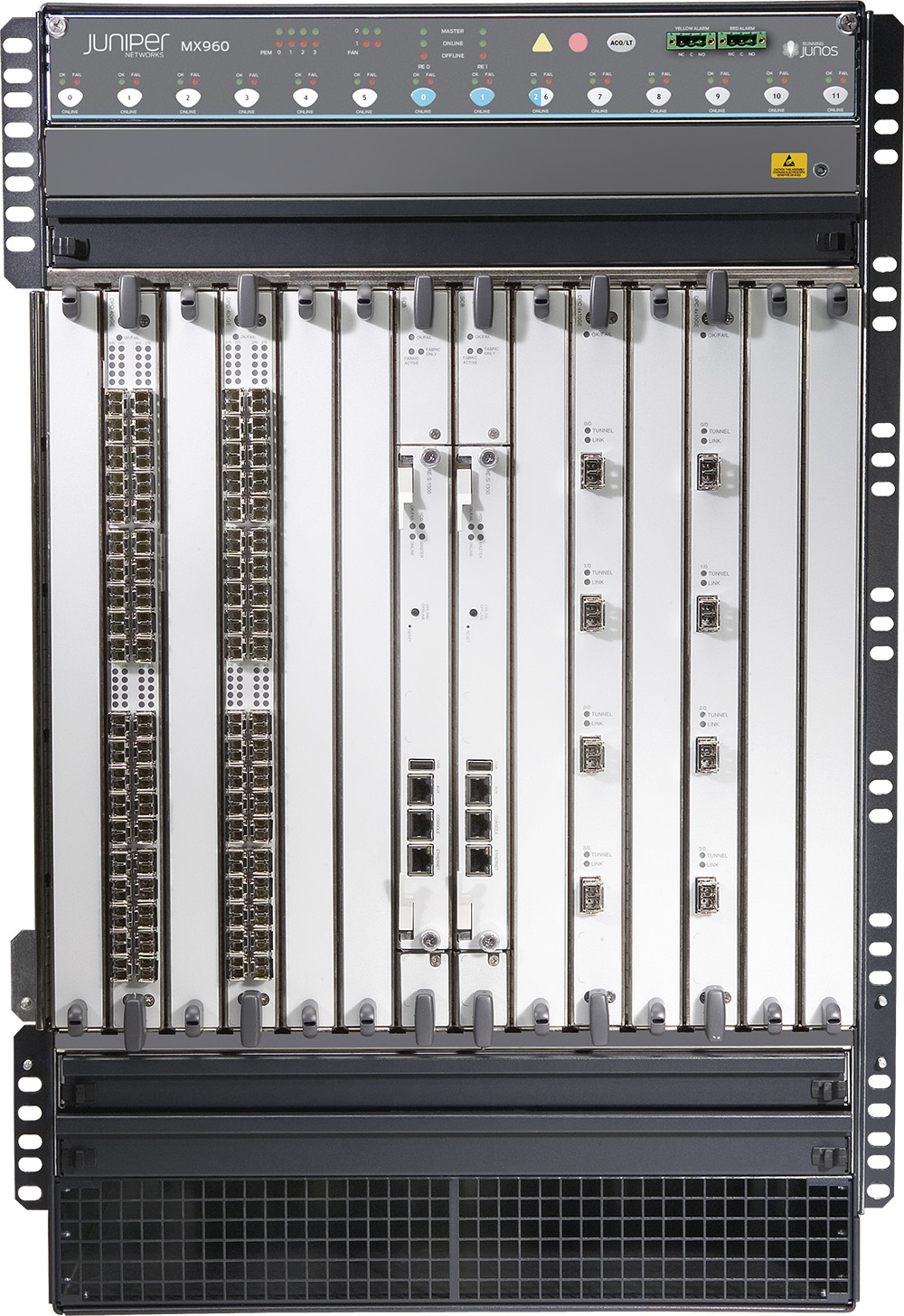Today I Passed the Online Juniper JNCIA-Junos Exam
This was my first time taking an online-proctored exam through Pearson VUE. For popular IT exams, this method of testing is still fairly new, and a certain amount of mystique surrounds the test-taking experience. This post details my experience passing the online exam.

In 2013, I passed the JN0-101 exam for the JNCIA-Junos certification. I studied for that certification right after passing the CCNP Routing & Switching exams earlier in 2013. As I studied for the CCNP, I kept hearing stories about engineers who only knew how to work on Cisco gear and were practically useless when it came to any other vendor’s equipment. I wanted to prove to potential future employers that I wasn’t a one-trick pony and could adapt to a completely different command syntax. I had not even heard of MikroTik yet, but that’s a whole other story.
A few years later, I was working more seriously toward the CCIE R&S exam and let my Juniper certification expire. The JNCIA is at the foundational level and wasn’t very important to my career at that point. The current JNCIA-Junos JN0-103 exam still fits into both of those categories. However, I am interested in going further with Juniper at some point in the near future, and the JNCIA exam is required before taking more advanced exams. Cisco used to be the same way but changed their policies earlier in 2020 so that you can jump straight into the CCNP level if you wish.
It’s really no problem, though. Juniper currently offers free training through Junos Genius, and if you go through the entire free JNCIA-Junos course, they give you a voucher for 75% off the exam. The $200 USD exam becomes $50, which is not bad at all for a foundational exam. Juniper was offering 100% off for a while, but I missed the window on that.
The free course contains good information, but it would be nice if Juniper provided a download of the slide deck so that I didn’t have to suffer through the video. For someone who now has several years of experience under me, I could have gleaned what I needed to refresh on much faster through the slide deck alone.
What I found to be much more valuable than the course was the recently released Day One book: Beginner’s Guide to Learning Junos. For people with any amount of networking experience (e.g. you already know what an IP address is and how subnetting works), it is my opinion that this book is all you really need to pass the current JNCIA-Junos exam. It is very well-written, as you would expect from the all-star cast of authors.
While some IT certifications have been available online for a while, most traditional certifications are delivered at testing centers. Due to COVID-19 in 2020, online proctoring became a necessity. However, with any change in procedure, you tend to hear only the negative things. When you’ve got several hundred dollars at stake, this can make you extremely nervous. I was very nervous, too, since I had not taken an online-proctored exam yet. I thought the combination of knowing the material really well and not having much money at stake would be a good way to try it out.
I had a fairly decent experience overall. I don’t want to discount other people’s horror stories, but it really was not bad at all for me. With that said, I was lucky in that my Internet connection didn’t go out, and I did make a conscious effort to keep my eyes focused on the screen and not look off to the sides. I did catch myself “mouthing” a couple of the questions as I read them, but nobody yelled at me for it.
In fact, I never saw or heard the proctor at all. I had heard that during the online exams, you would see the proctor watching you. With this Pearson VUE delivery, that was not the case. Your webcam stays on the entire time, and you do see an image of yourself with a notification that you are being recorded, but I did not have any direct interaction with anyone during the entire process. I know someone was probably keeping an eye me, but I was not presented with any direct knowledge of it.
One of the huge advantages of taking the exam online (other than not catching someone’s sickness) is the scheduling was very flexible. Whenever I’ve taken a proctored exam at a testing center, there are typically only a few large blocks of time available in a day, and it may take several days in advance to get a time that you want. This exam presented time slots every 15 minutes, starting 30 minutes in advance. I was able to go from scheduling the exam to taking it in about a half hour.
After you schedule and pay for the exam, you’ll receive an email or text message with a link to begin the process. This part is typically done through your phone and involves taking a picture of yourself, your ID, your computer and surrounding walls. I was a little nervous about this part because the only room I have to work in right now is a storage room, not really a true “home office”. Having never done this, I thought they might be picky about that, but it wasn’t an issue.
Unfortunately, there was some issue with web forms timing out on my phone. This was the only part of the entire process that I had any issues with. It took nearly ten attempts to get all of my pictures taken and sent to Pearson VUE. However, after I was done with the phone interaction, everything went smooth and I did not experience any more problems. After you schedule and pay for the exam, they encourage you to begin this verification process early. Due to my issues during this step, I was glad that I did!
After you confirm on the computer that you’ve uploaded the pictures through your phone, your webcam starts recording, and you are placed into a queue waiting for a proctor to review everything. When your exam session starts, the Pearson VUE app takes over your entire screen. From there, it looks identical to the interface you’re used to from taking the exams at testing centers. The only difference is a box is placed at the top center which displays your webcam image and gives you the option of using a digital whiteboard or contacting the proctor via chat.
One word of caution here. There are no settings available to adjust (such as font size). I have my 15” MacBook Pro normally set to display at 1920x1200, so the text was a little small in the exam environment. Make sure you set your screen to a lower resolution before you begin the exam if you want the text size to be larger.

When you reach the end of the exam, you are immediately shown the results just like at a testing center. You get the normal pass/fail status, and domain percentages. At a testing center you also receive a printout of the same information. The online environment doesn’t allow you to save or print a copy, unfortunately. At this point, your exam results are reviewed (and I’m assuming webcam footage as well). You should eventually receive an email with your official results.
The JNCIA-Junos is not going to alter the trajectory of my career at this point in time, but it’s still a good certification to go after if you want to demonstrate the ability to use another vendor’s configuration syntax. Nearly all of the basic concepts (like how routing and switching actually works) are vendor-neutral anyway, and it’s just a matter of learning how a particular vendor implements those concepts. This is sometimes more difficult to understand when you are first starting out. Eventually, though, it just becomes second nature.
I was much more interested in seeing what the online proctored environments are like without risking a lot of money. Despite the minor verification issues at the beginning, I would definitely take an exam using this format again. That being said, I would still feel more comfortable going to an actual testing center at this point (especially if hundreds of dollars of my own money were at stake). But then again, I am also fortunate in that I live only a few miles from several testing centers. If I lived further away, these online-proctored tests would definitely be my first choice!